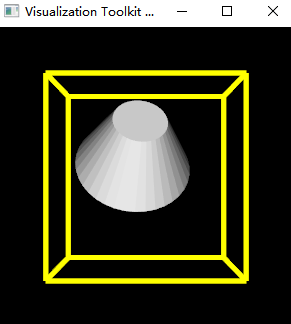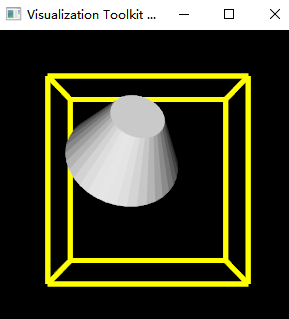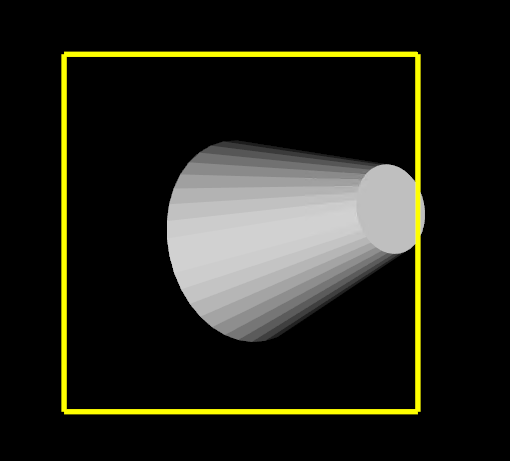@Paulo_Carvalho Thanks for kindly reply. I have written a complete code to reproduce my problem:
import vtkmodules.all as vtk
# cylinder = vtk.vtkCylinderSource()
# cylinder.Update()
# polydata = cylinder.GetOutput()
reader = vtk.vtkSTLReader()
reader.SetFileName('polydata.stl')
reader.Update()
polydata = reader.GetOutput()
mapper = vtk.vtkPolyDataMapper()
mapper.SetInputData(polydata)
actor = vtk.vtkActor()
actor.SetMapper(mapper)
actor.SetPosition(10, 10, 20)
actor.RotateX(30)
actor.RotateY(30)
actor.RotateZ(30)
def lineActor(p1, p2):
lineSource = vtk.vtkLineSource()
lineSource.SetPoint1(p1[0], p1[1], p1[2])
lineSource.SetPoint2(p2[0], p2[1], p2[2])
lineSource.Update()
lineMapper = vtk.vtkPolyDataMapper()
lineMapper.SetInputData(lineSource.GetOutput())
lineActor = vtk.vtkActor()
lineActor.SetMapper(lineMapper)
lineActor.GetProperty().SetColor(1, 1, 0)
lineActor.GetProperty().SetLineWidth(5)
return lineActor
bounds = actor.GetBounds()
xmin, xmax, ymin, ymax, zmin, zmax = bounds
ps = [
[xmin, ymin, zmin, xmax, ymin, zmin],
[xmax, ymin, zmin, xmax, ymax, zmin],
[xmin, ymax, zmin, xmax, ymax, zmin],
[xmin, ymin, zmin, xmin, ymax, zmin],
[xmin, ymin, zmax, xmax, ymin, zmax],
[xmax, ymin, zmax, xmax, ymax, zmax],
[xmin, ymax, zmax, xmax, ymax, zmax],
[xmin, ymin, zmax, xmin, ymax, zmax],
[xmin, ymin, zmin, xmin, ymin, zmax],
[xmax, ymin, zmin, xmax, ymin, zmax],
[xmax, ymax, zmin, xmax, ymax, zmax],
[xmin, ymax, zmin, xmin, ymax, zmax]
]
renderer = vtk.vtkRenderer()
renderer.AddActor(actor)
for p in ps:
lineA = lineActor(p1=[p[0], p[1], p[2]], p2=[p[3], p[4], p[5]])
renderer.AddActor(lineA)
renWin = vtk.vtkRenderWindow()
renWin.AddRenderer(renderer)
iren = vtk.vtkRenderWindowInteractor()
def mouseMoveEvent(iren, event):
print('mouse move')
matrix = actor.GetMatrix()
transform = vtk.vtkTransform()
transform.SetMatrix(matrix)
transform.Update()
print(actor.GetCenter())
oldPolyData = actor.GetMapper().GetInput()
filter = vtk.vtkTransformPolyDataFilter()
filter.SetInputData(oldPolyData)
filter.SetTransform(transform)
filter.Update()
newPolyData = filter.GetOutput()
actor.SetOrigin(0, 0, 0)
actor.SetOrientation(0, 0, 0)
actor.SetScale(1, 1, 1)
actor.SetPosition(0, 0, 0)
actor.SetUserTransform(None)
actor.GetMapper().SetInputData(newPolyData)
iren.AddObserver('MouseMoveEvent', mouseMoveEvent)
style = vtk.vtkInteractorStyleTrackballActor()
iren.SetInteractorStyle(style)
iren.SetRenderWindow(renWin)
iren.Initialize()
iren.Start()
My test data is:
polydata.stl (41.1 KB)
Steps to reproduct my problem:
- when the code is run, and the result is:

And the printed center is: (41.48747253417969, 123.91775894165039, 9.721415996551514)
The white actor is my target, and the yellow line is the bounds of target. We can see that the target is included by the yellow line.
- Spin the actor:
ctrl+left press in the white actor, please notes that the ctrl board is pressed so that spin would happen for the target.The left mouse button is pressed and move, the target would spin:

we can see that the target is still included by the yellow lines. The printing is stopped.
-
Releases the left mouse button, and move the mouse, we can see the printed center is: (41.556962966918945, 124.36083602905273, 9.856724977493286). And it is changed.
-
Repeating step 2/3, we can obtain the following figure, and the target is not included by the yellow lines.

When repeating step 2/3, we must iterative ctrl+press left mouse and move and release left mouse and move. We can see the printed center is changing.
Strangely, when I replace the target with a vtk.vtkCylinderSource(), everything is ok.
Any suggestion is appreciated~~~




